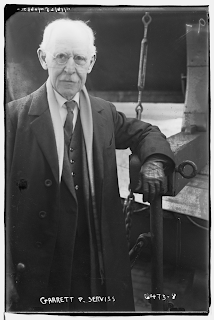Today on Far Future Horizons we are proud to present a 1923
silent animated motion picture based on Garrett P. Serviss’ popularization of Albert Einstein’s theories
of relativity - The Einstein Theory of Relativity published in 1923.
The Einstein
Theory of Relativity is a 20 minute silent black and white animated film. It
was produced in 1923 by the Fleischer Studios, best known for their Betty Boop
cartoons.
 |
| A Still from the film The Einstein Theory of Relativity |
This film was produced in collaboration with popular
science journalist and science fiction author Garrett P. Serviss to accompany
his book on the same topic.
Serviss was the author of Edison's Conquest of Mars (1898),
written on commission from The Boston
Post as a sequel to "Fighters from Mars", an un-authorized and
heavily altered version of H. G. Wells’ War of the Worlds.
 |
| Edison's Conquest of Mars (1898) |
 |
| A Still from the film The Einstein Theory of Relativity |
Two versions of
the Fleischer film are reported to exist - a shorter two-reel (20 minute) edit
intended for general theatre audiences, and a longer five-reel (50 minute)
version intended for educational use.
 |
| A Still from the film The Einstein Theory of Relativity |
The film aims to
explain Albert Einstein’s Theory of Relativity to anyone willing to invest 20
minutes in watching the movie. Though it is almost a hundred years old, its
simple but ingenious animation is very effective in demystifying Einstein’s
theory without the need of advanced physics or mathematics.
The movie starts
by examining the meaning behind the term relativity and how it relates to the
general theory. It then proceeds to demonstrate how things such as motion,
direction, size, speed and time are all relative to the observer’s point of
view or the general frame of reference.
Serviss’ book and an accompanying DVD of this
wonderful film are available from Amazon.com and Apogee Books.
The Einstein Theory of Relativity: a 1923 Silent Animated Film
Copyright Disclaimer
Copyright Disclaimer Under Section 107 of the Copyright Act 1976, allowance is made for "fair use" for purposes such as criticism, comment, news reporting, teaching, scholarship, and research. Fair use is a use permitted by copyright statute that might otherwise be infringing. Non-profit, educational or personal use tips the balance in favor of fair use.




No comments:
Post a Comment